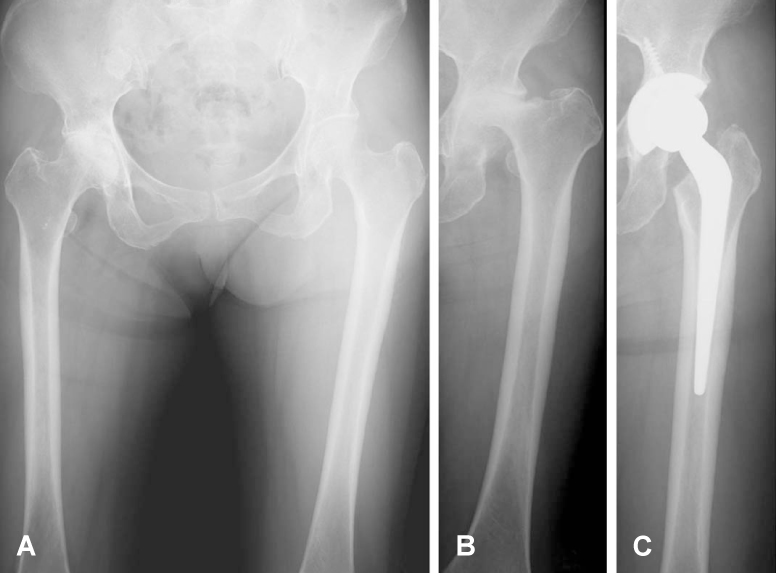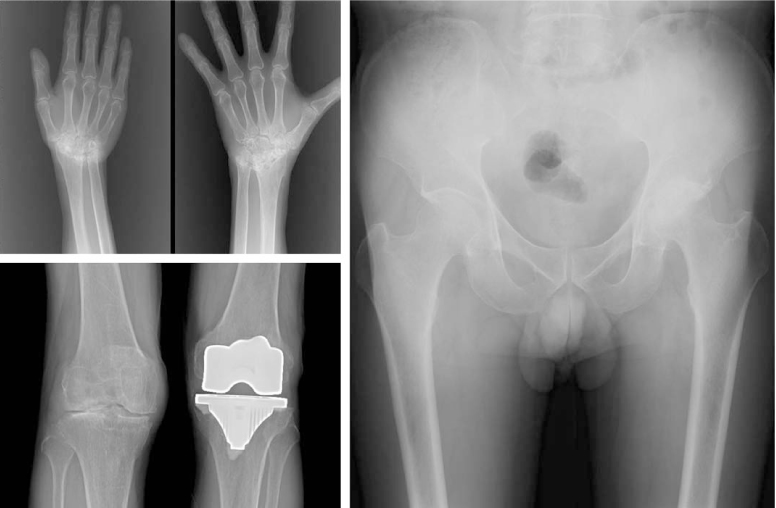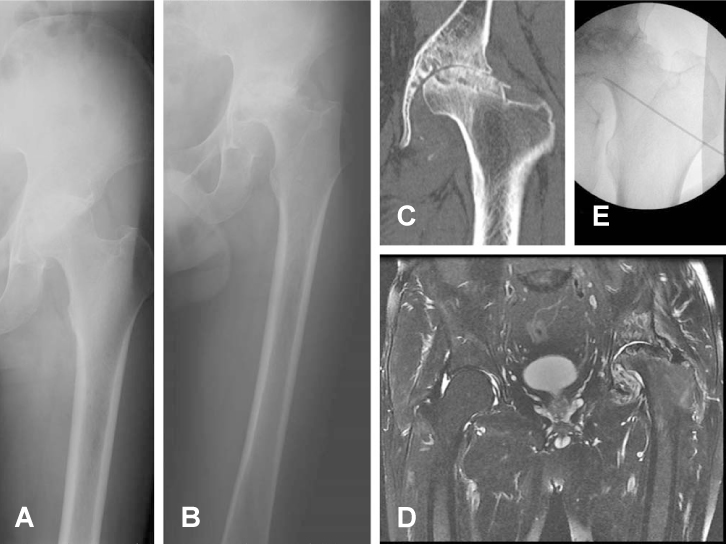J Korean Hip Soc.
2010 Sep;22(3):234-240. 10.5371/jkhs.2010.22.3.234.
Rapidly Destructive Coxarthrosis in Patients with Rheumatoid Arthritis: Report on 3 Cases
- Affiliations
-
- 1Department of Orthopedic Surgery, Seoul Veterans Hospital, Seoul, Korea. yun8813@paran.com
- 2Department of Orthopedic Surgery, College of Medicine, Korea University, Seoul, Korea.
- KMID: 1461176
- DOI: http://doi.org/10.5371/jkhs.2010.22.3.234
Abstract
- Rapidly destructive coxarthrosis may be caused by osteoarthritis, osteonecrosis of the femoral head and rheumatoid arthritis, but its etiology has not been clarified. Rapidly destructive coxarthrosis generally occurs in old age patients and the patients clinically show severe pain, but a relatively preserved range of motion. Rapidly destructive coxarthrosis is characterized by a rapid destruction, resorption and subluxation of the femoral head, destruction of the articular area in the acetabulum, above 50% or 2 mm/year loss of the joint space and minimal osteophyte formation. The radiologic changes are dramatic and they may mimic neuropathic or septic arthritis. We report here on three cases of rheumatoid arthritis that had acute destruction of the hip joint and rapid resorption of the femoral head, and we also review the relevant medical literature. We recommend taking repetitive radiographs for rheumatoid arthritis patients who suffer with continuing severe hip pain.
MeSH Terms
Figure
Reference
-
1. Postel M, Kerboull M. Total prosthetic replacement in rapidly destructive arthrosis of the hip joint. Clin Orthop Relat Res. 1970. 72:138–144.2. Rosenberg ZS, Shankman S, Steiner GC, Kastenbaum DK, Norman A, Lazansky MG. Rapid destructive osteoarthritis: clinical, radiographic, and pathologic features. Radiology. 1992. 182:213–216.
Article3. Batra S, Batra M, McMurtrie A, Sinha A. Rapidly destructive osteoarthritis of the hip joint: a case series. J Orthop Surg Res. 2008. 3:3.
Article4. Ryu KN, Kim EJ, Yoo MC, Park YK, Sartoris DJ, Resnick D. Ischemic necrosis of the entire femoral head and rapidly destructive hip disease: potential causative relationship. Skeletal Radiol. 1997. 26:143–149.
Article5. Yoshino K, Momohara S, Ikari K, et al. Acute destruction of the hip joints and rapid resorption of femoral head in patients with rheumatoid arthritis. Mod Rheumatol. 2006. 16:395–400.
Article6. Eberhardt KB, Rydgren LC, Pettersson H, Wollheim FA. Early rheumatoid arthritis--onset, course, and outcome over 2 years. Rheumatol Int. 1990. 10:135–142.
Article7. Danielsson LG. Incidence and prognosis of coxarthrosis. 1964. Clin Orthop Relat Res. 1993. 287:13–18.8. Mitrovic DR, Riera H. Synovial, articular cartilage and bone changes in rapidly destructive arthropathy (osteoarthritis) of the hip. Rheumatol Int. 1992. 12:17–22.
Article9. Komiya S, Inoue A, Sasaguri Y, Minamitani K, Morimatsu M. Rapidly destructive arthropathy of the hip. Studies on bone resorptive factors in joint fluid with a theory of pathogenesis. Clin Orthop Relat Res. 1992. 284:273–282.






